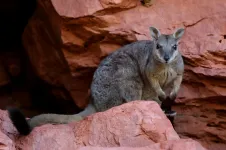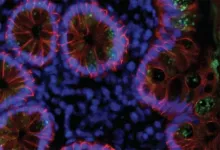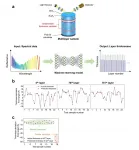(Press-News.org) Indigenous peoples' lands may harbour a significant proportion of threatened and endangered species globally, according to University of Queensland-led research.
UQ's Dr Chris O'Bryan and his team conducted the first comprehensive analysis of land mammal composition across mapped Indigenous lands.
"These lands cover more than one-quarter of the Earth, of which a significant proportion is still free from industrial-level human impacts," Dr O'Bryan said.
"As a result, Indigenous peoples and their lands are crucial for the long-term persistence of the planet's biodiversity and ecosystem services.
"Despite this, we know relatively little about what animals, including highly imperilled species, may reside in or depend on these lands."
The team overlayed maps of Indigenous peoples' lands and habitat data for 4,460 species assessed by the International Union for Conservation of Nature (IUCN) to estimate the overlap of each species.
"We picked mammals as a bellwether indicator of biodiversity protection," Dr O'Bryan said.
"This is because there's more data about the suitable habitat of mammals and there is evidence to suggest that patterns observed in mammals may reflect other forms of biodiversity.
"In other words, if mammals are absent, other animals are likely to be absent as well.
"We're hoping this study provides future opportunities for applying our methodology to other animal groups.
"We discovered that 2,175 mammal species - about half of the total species tracked - have at least 10 per cent of their ranges in Indigenous peoples' lands.
"And 646 species - or 14 per cent - have more than half of their ranges within these lands.
"Amazingly, for threatened species in particular, 413 - or about 41 per cent of threatened species tracked - occur in Indigenous peoples' lands.
"The endangered red panda (Ailurus fulgens) and the tiger (Panthera tigris) of Southeast Asia have more than half their habitat within such lands.
"In Australia, the critically endangered northern hairy-nosed wombat (Lasiorhinus krefftii) has 100 per cent of its habitat in these lands."
Dr O'Bryan said the work showed the importance of Indigenous peoples' lands.
"These areas are critical for the successful implementation of international conservation and sustainable development agendas," he said.
"Representatives of Indigenous peoples are engaging in global environmental forums and national and local collaboration frameworks, which are critical for equitable and effective cross-cultural conservation activities to be negotiated.
"Greater recognition and support for Indigenous people's rights to, and relationships with, their lands needs to continue, and this pressing imperative needs to balance Indigenous self-determination and biodiversity conservation.
"Only through rights-based, equitable and respectful partnerships with Indigenous peoples, will it be possible to ensure the long-term and equitable conservation of biodiversity."
INFORMATION:
The research has been published in Conservation Biology (DOI: 10.1111/cobi.13620).
ITHACA, N.Y. - Far below the gaseous atmospheric shroud on Saturn's largest moon, Titan, lies Kraken Mare, a sea of liquid methane. Cornell University astronomers have estimated that sea to be at least 1,000-feet deep near its center - enough room for a potential robotic submarine to explore.
After sifting through data from one of the final Titan flybys of the Cassini mission, the researchers detailed their findings in "The Bathymetry of Moray Sinus at Titan's Kraken Mare," which published in the Journal of Geophysical Research.
"The depth and composition of each of Titan's seas had already been measured, ...
University of Illinois Chicago is one of the U.S. sites participating in clinical trials to cure severe red blood congenital diseases such as sickle cell anemia or Thalassemia by safely modifying the DNA of patients' blood cells.
The first cases treated with this approach were recently published in an article co-authored by Dr. Damiano Rondelli, the Michael Reese Professor of Hematology at the UIC College of Medicine. The article reports two patients have been cured of beta thalassemia and sickle cell disease after their own genes were edited with CRISPR-Cas9 technology. The two researchers ...
New research from McMaster University has found that psychiatric help for mothers with postpartum depression results in healthy changes in the brains of their babies.
The study, published in the journal Depression and Anxiety this week, found treating mothers who had postpartum depression with cognitive behavioural therapy (CBT) not only helped the moms, but resulted in adaptive changes in the brains and behaviour of their infants.
More specifically, after the mothers' treatment, their infants showed healthy changes in their nervous and cardiovascular systems, and they were observed to better regulate their behaviours and emotions by both mothers and fathers.
"In fact, we found that after their moms were treated that their infant's ...
As the number of people who have fought off SARS-CoV-2 climbs ever higher, a critical question has grown in importance: How long will their immunity to the novel coronavirus last? A new Rockefeller study offers an encouraging answer, suggesting that those who recover from COVID-19 are protected against the virus for at least six months, and likely much longer.
The findings, published in Nature, provide the strongest evidence yet that the immune system "remembers" the virus and, remarkably, continues to improve the quality of antibodies even after the infection has waned. Antibodies produced ...
BIRMINGHAM, Ala. - University of Alabama at Birmingham polymer and radionuclide chemists report what they say "may represent a major step forward in microcapsule drug delivery systems."
The UAB microcapsules -- labeled with radioactive zirconium-89 -- are the first example of hollow polymer capsules capable of long-term, multiday positron emission tomography, or PET, imaging in vivo. In previous work, UAB researchers showed that the hollow capsules could be filled with a potent dose of the cancer drug doxorubicin, which could then be released by therapeutic ultrasound that ruptures the microcapsules.
PET imaging with zirconium-89 -- which has a half-life of 3.3 days -- allowed the capsules to be traced in test mice up to seven days. The major ...
NASA-funded research on the 11 largest freshwater lakes in the world coupled field and satellite observations to provide a new understanding of how large bodies of water fix carbon, as well as how a changing climate and lakes interact.
Scientists at the Michigan Tech Research Institute (MTRI) studied the five Laurentian Great Lakes bordering the U.S. and Canada; the three African Great Lakes, Tanganyika, Victoria and Malawi; Lake Baikal in Russia; and Great Bear and Great Slave lakes in Canada.
These 11 lakes hold more than 50% of the surface freshwater that millions of people and countless other creatures rely on, underscoring the importance of understanding how they are being altered by climate change and other factors.
The two Canadian lakes ...
BUFFALO, N.Y. -- In the dark waters of Lake Superior, a fish species adapted to regain a genetic trait that may have helped its ancient ancestors see in the ocean, a study finds.
The research focuses on kiyis, which inhabit Lake Superior at depths of about 80 to over 200 meters deep. These fish, known to scientists as "Coregonus kiyi," belong to a group of closely related salmonids known as ciscoes.
In contrast to three other Lake Superior ciscoes that dwell and feed in shallower regions of water, the kiyis are far more likely to carry a version of the rhodopsin gene that probably improves vision in dim "blue-shifted" waters, ...
Curtin University researchers have uncovered a method of making silicon, found commonly in electronics such as phones, cameras and computers, at room temperature.
The new technique works by replacing extreme heat with electrical currents to produce the same chemical reaction that turns silica into silicon at a reduced economic and environmental cost.
Lead researcher, PhD candidate Song Zhang from Curtin's School of Molecular and Life Sciences said that while the team's discovery was made at the nanoscale, it defines a way of replacing thermochemical processes with electrochemical processes, which ...
With the recent explosive demand for data storage, ranging from data centers to various smart and connected devices, the need for higher-capacity and more compact memory devices is constantly increasing. As a result, semiconductor devices are now moving from 2D to 3D. The 3D-NAND flash memory is the most commercially successful 3D semiconductor device today, and its demand for supporting our data-driven world is now growing exponentially.
The scaling law for 3D devices is achieved by stacking more and more semiconductor layers, well above 100 layers, in a more reliable way. As each layer thickness corresponds to the effective channel length, accurate characterization and control of layer-by-layer thickness is critical. To date, ...
Giant ambush-predator worms, possible ancestors of the 'bobbit worm', may have colonized the seafloor of the Eurasian continent around 20 million years ago. The findings, based on the reconstruction of large, L-shaped burrows from layers of seafloor dating back to the Miocene (23 million to 5.3 million years ago) of northeast Taiwan, are reported in Scientific Reports this week.
Ludvig Löwemark and colleagues reconstructed a new trace fossil, which they name Pennichnus formosae, using 319 specimens preserved within layers of seafloor formed during the Miocene era across northeast Taiwan. Trace fossils are geological features such as burrows, track marks and plant root cavities preserved ...




